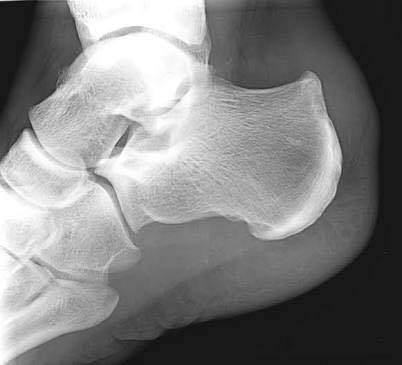| |||||||||||||
|
miércoles, 22 de febrero de 2017
Tres libros nuevos / Three vew books
Complicaciones de fracturas en niños
Fracture complications in children
Fuente
Este artículo es originalmente publicado en:
Este artículo es originalmente publicado en:
De y todos los derechos reservados para:
Courtesy: Prof Nabil Ebraheim, University of Toledo, Ohio, USA
Dr. Ebraheim’s educational animated video describes the fracture complications in children, how to prevent it, diagnose it, and treat it.
Become a friend on facebook:
http://www.facebook.com/drebraheim
Become a friend on facebook:
http://www.facebook.com/drebraheim
Follow me on twitter:
https://twitter.com/#!/DrEbraheim_UTMC
https://twitter.com/#!/DrEbraheim_UTMC
Donate to the University of Toledo Foundation Department of Orthopaedic Surgery Endowed Chair Fund:
https://www.utfoundation.org/foundati…
https://www.utfoundation.org/foundati…
- Categoría
- Licencia
- Licencia de YouTube estándar
martes, 21 de febrero de 2017
Estudio observacional retrospectivo que compara la clasificación internacional del Instituto de displasia de cadera con la clasificación de Tonnis de la displasia del desarrollo de la cadera
Retrospective observational study comparing the international hip dysplasia institute classification with the Tonnis classification of developmental dysplasia of the hip
Fuente
Este artículo es originalmente publicado en:
Este artículo es originalmente publicado en:
De:
2017 Jan;96(3):e5902. doi: 10.1097/MD.0000000000005902.
Todos los derechos reservados para:
© 2017 the Author(s). Published by Wolters Kluwer Health, Inc.This is an open access article distributed under the Creative Commons Attribution License 4.0 (CCBY), which permits unrestricted use, distribution, and reproduction in any medium, provided the original work is properly cited.
Abstract
The Tonnis radiographic classification of developmental dysplasia of the hip (DDH) has been widely used. The International Hip Dysplasia Institute (IHDI) classification, a new classification system recently developed by the IHDI, is beginning to be applied to evaluate DDH with the absence of an ossification center. This study aimed to validate its reliability in evaluating DDH with an ossification center and compared the 2 classifications in evaluating all DDH hips. In addition, the prediction values of the 2 classifications on clinical management selection were compared.In total, the pelvic radiographs of 212 DDH patients (318 hips) between the ages of 6 and 48 months admitted to Shanghai Children’s Medical Center between 2007 and 2014 were assessed by 3 observers retrospectively using the 2 classifications. Intraobserver and interobserver agreements were evaluated using the kappa method. We also assessed the correlation of the 2 radiographic classifications in terms of treatment selection.In total, 216 hips received closed reduction, 61 hips received open reduction, and 41 hips received pelvic osteotomy. Both classifications showed excellent intraobserver and interobserver reliability. However, the IHDI demonstrated more interobserver reliability, especially for evaluating DDH without an ossification center. Both classifications were found to be relevant in detecting the DDH treatment type (P < 0.01). The Tonnis classification was also relevant, especially for evaluating DDH with an ossification center.The IHDI classification exhibited good practicability in classifying the radiographic severity of DDH compared to the Tonnis classification, particularly in hips without an ossification center. Like the Tonnis classification, the IHDI classification can predict treatment plans. Therefore, the IHDI classification seems to be the upgraded version of the Tonnis classification.
Resumen
La clasificación radiográfica Tonnis de la displasia del desarrollo de la cadera (DDH) ha sido ampliamente utilizada. La clasificación del Instituto Internacional de Hip Dysplasia (IHDI), un nuevo sistema de clasificación desarrollado recientemente por el IHDI, comienza a aplicarse para evaluar DDH con la ausencia de un centro de osificación. Este estudio tuvo como objetivo validar su fiabilidad en la evaluación de DDH con un centro de osificación y comparó las 2 clasificaciones en la evaluación de todas las caderas DDH. Además, se compararon los valores de predicción de las 2 clasificaciones en la selección de la gestión clínica. En total, las radiografías pélvicas de 212 pacientes DDH (318 caderas) entre las edades de 6 y 48 meses admitidos en el Centro Médico de Shanghai entre 2007 y 2014 fueron Evaluados por 3 observadores de forma retrospectiva utilizando las 2 clasificaciones. Se evaluaron los acuerdos intraobservador e interobservador usando el método kappa. También se evaluó la correlación de las 2 clasificaciones radiográficas en términos de selección de tratamiento. En total, 216 caderas recibieron reducción cerrada, 61 caderas recibieron reducción abierta y 41 caderas recibieron osteotomía pélvica. Ambas clasificaciones mostraron una excelente confiabilidad intraobservador e interobservador. Sin embargo, el IHDI demostró mayor confiabilidad interobservador, especialmente para evaluar DDH sin un centro de osificación. Ambas clasificaciones resultaron ser relevantes en la detección del tipo de tratamiento DDH (P <0,01). La clasificación de TONNIS también fue relevante, especialmente para evaluar DDH con un centro de osificación. La clasificación de IHDI mostró una buena practicidad para clasificar la severidad radiográfica de DDH en comparación con la clasificación de Tonnis, particularmente en caderas sin centro de osificación. Al igual que la clasificación Tonnis, la clasificación IHDI puede predecir los planes de tratamiento. Por lo tanto, la clasificación IHDI parece ser la versión mejorada de la clasificación de Tonnis.
PMID: 28099350 PMCID:
DOI:
[PubMed – in process]
Suscribirse a:
Entradas (Atom)



